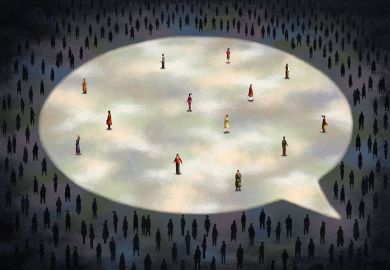Imagine you are lecturing undergraduates about postwar British theatre: you mention Ken Tynan - blank looks; John Osborne - vague nods; Edward Bond - mute incomprehension. There is only one thing for it: write a textbook. Aiming to provide "an overview of significant developments in the evolution of British theatre since the second world war", Dominic Shellard, head of drama at Sheffield, covers the years 1945 to 1997.
It is a hard act to pull off. Shellard discusses individual plays, playwrights, performers, sometimes even agents and directors. Major institutions such as the National Theatre and Royal Shakespeare Company get a lot of attention; Edinburgh's Traverse and the Glasgow Citizens much less. Censorship and the role of journalistic criticism are covered, but patchily. Genres such as the mega-musical get their due.
Where there is no consensus, both sides of the argument are reported. Against the idea that the West End hosted nothing but lightweight plays for a decade after the war, Shellard stresses the role of French and American imports. In the section on the 1956 "revolution" in British theatre provoked by Osborne's Look Back in Anger , Shellard gives a fair account of the Royal Court's new writing policy. But his reassessment, which champions Shelagh Delaney's A Taste of Honey against Osborne, is poorly argued.
The chapters on the late 1960s and 1970s work better than the earlier ones, perhaps because the period has attracted less controversy, but the final account of recent years fails to convey either the complexity of Thatcherite arts policies or the exciting variety of new writing in the 1990s.
While he relies mostly on familiar secondary sources, Shellard throws in some primary material, such as previously unpublished first-hand testimony.At such points, the narrative suddenly becomes denser and more engaging.
Although he has researched consorship, his conclusions seem exaggerated. The fact that productions of two plays were forbidden for political reasons between 1945 and 1956 is hardly scandalous. Nor, in the absence of an assessment of their quality, is it useful to call the 42 banned works of that era "a whole generation of lost plays".
One of the book's problems is that although the coverage is comprehensive,it is often indiscriminate. And there is very little material on what the postwar classics actually looked like on stage. This is a pity because Shellard's one account of attending a play - the West Yorkshire Playhouse visit of Mark Ravenhill's Shopping and Fucking in 1997 - perfectly conveys live theatre's power to "aggravate, move and alarm" : the play's obscene story about Diana Princess of Wales was seen by an audience two days after her death. But then Shellard spoils things by categorising the play as gay drama.
Yet despite an irritating structure - chapters are divided into digestible chunks, some less than a page long - British Theatre since the War does fulfil its modest intention to be a "first and useful map", introductory rather than definitive. A deeper, more theoretical history of the subject still remains to be written.
Aleks Sierz teaches journalism at Goldsmiths College, University of London, and reviews theatre for The Stage .
British Theatre Since the War
Author - Dominic Shellard
ISBN - 0 300 07684 3
Publisher - Yale University Press
Price - £20.00
Pages - 245



